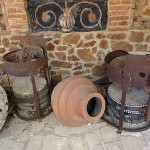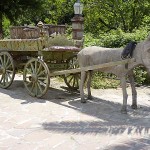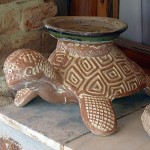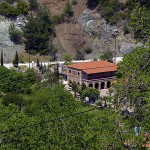The numerous and diverse walks on Lesvos are legend. There are many books written about walking on Lesvos. Now that the daytime temperatures are beginning to cool, our season of ‘adventure’ has begun. Each year we try to discover something new. In order to ease our summer bodies into the vigour of the Lesvos landscape, we frequently begin with a familiar walk that we know to be gentle and shady. So on 10 October, we decide to go for a leisurely stroll around the hill above Lafionas.
As the weather was very hazy, I decided that landscape photography would not be productive so put a macro lens on my camera.
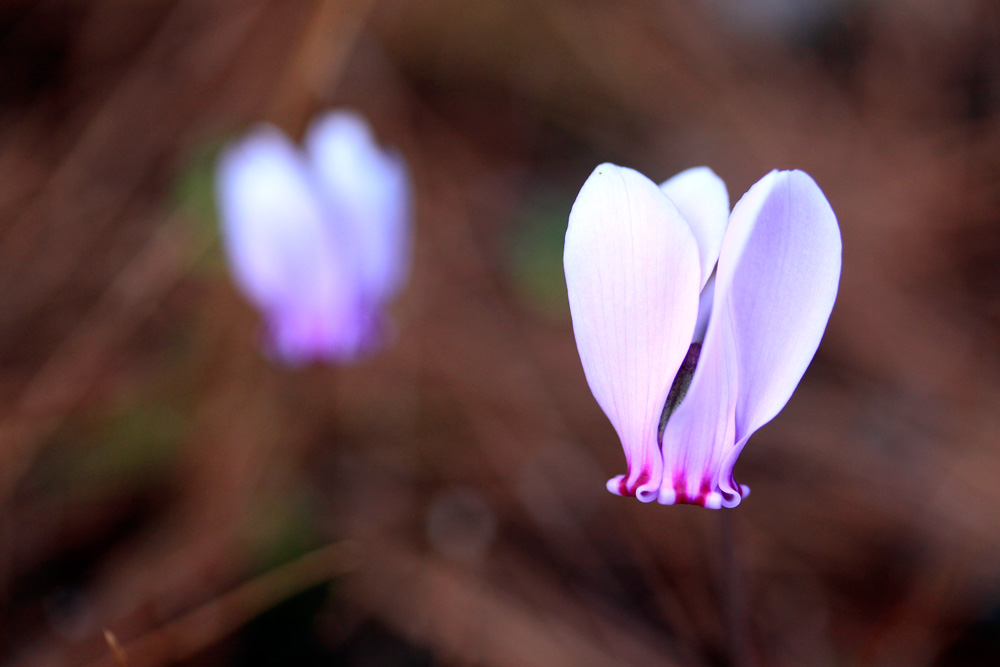 What a good decision! As we climbed the footpath rising above Lafionas we passed a small patch of Cyclamen poking stunning little flowers out of the pine needles.
What a good decision! As we climbed the footpath rising above Lafionas we passed a small patch of Cyclamen poking stunning little flowers out of the pine needles.
Our walk was punctuated with stops to view elusive insects, admire the views over Petra towards Turkey and simply listen to the silence.
As we rounded a corner we found an Oak tree with red/brown shiny and very sticky galls about 3cm in diameter. We then spotted different galls on the underside of a leaf. These were about 5-7 mm in diameter. We then found yet another type of gall this one was just over 1 cm. Please email me if you can help identify the types below.
The last surprise came when I stopped to photograph some dried thistles. I didn’t spot the brightly coloured Carpocoris nymph until I was doing a quick review of the picture.
I love Lesvos. I love the way a simple stroll through the pine forest with friends turns into a wildlife adventure. Lafionas is a beautiful hillside village that has real character and charm. It is worth visiting just for that. When you add in the amazing views towards Turkey and the walk around the mountain you have one amazing morning.
The walk features in the book On Foot in North Lesvos.

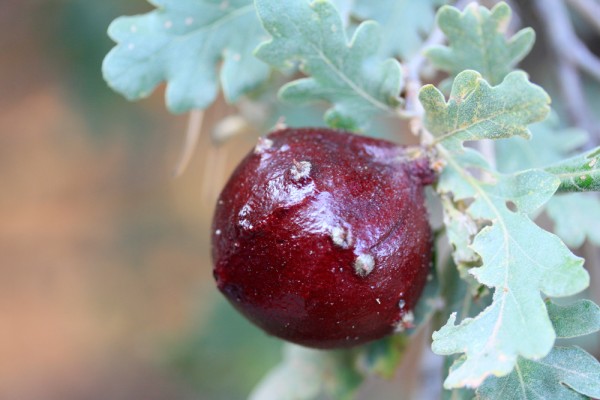
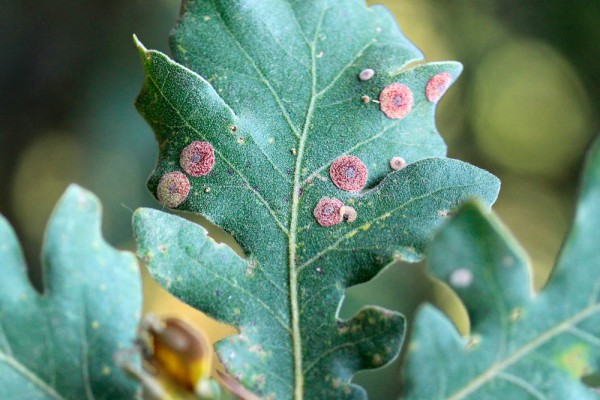
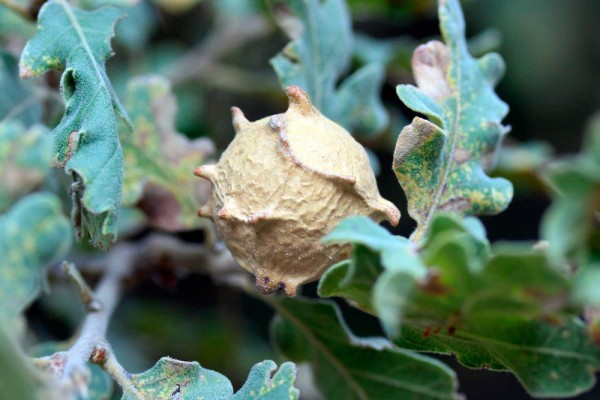
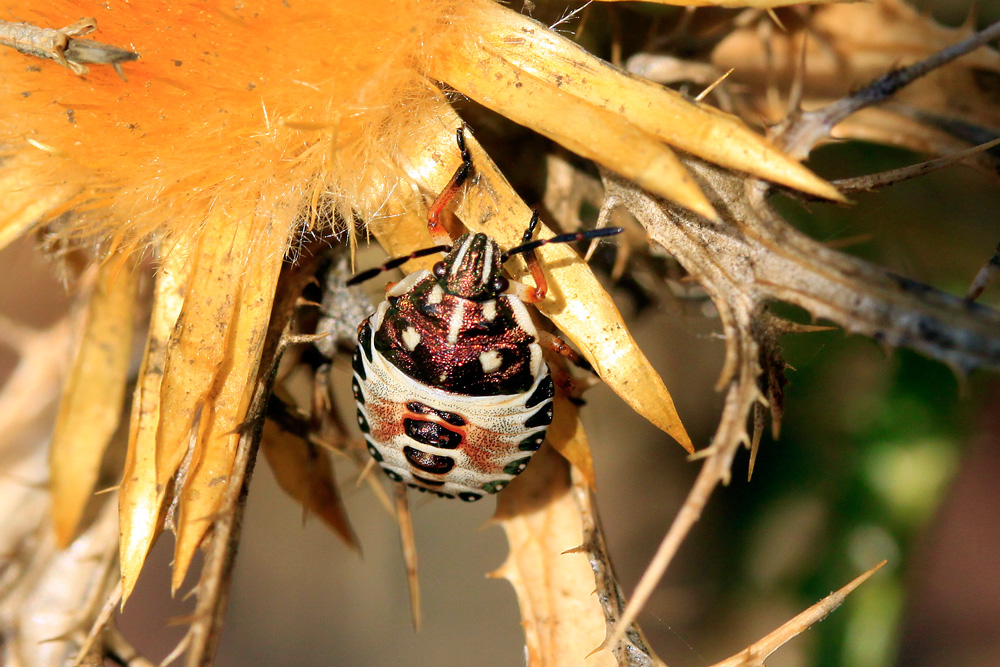

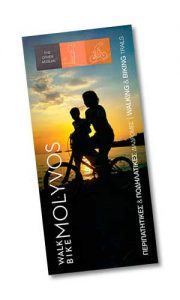 The guide has been produced by the
The guide has been produced by the 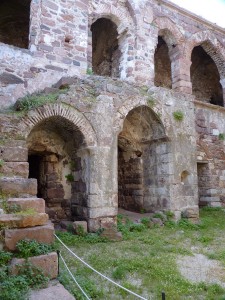
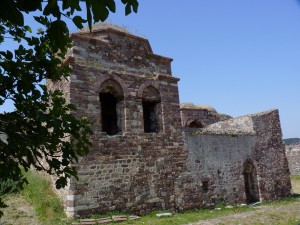
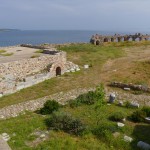
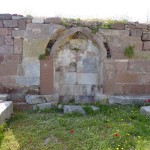
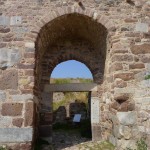
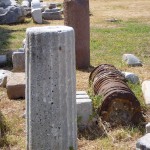
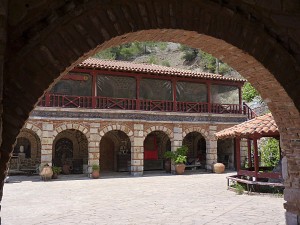 the museum (plus beer and food would not go amiss), we walked up a cobbled path into the village, which was very quiet. Along the main street, we said hello to a couple of ladies sitting outside a small taverna and inevitably got chatting. The younger of the two introduced herself as Maria and whilst this was her home village and she was visiting her mother (the older lady – also Maria) she lived now in Sydney. She, therefore, spoke good English and on our enquiries told us that the key holder for the museum was the priest and he was away from the village today.
the museum (plus beer and food would not go amiss), we walked up a cobbled path into the village, which was very quiet. Along the main street, we said hello to a couple of ladies sitting outside a small taverna and inevitably got chatting. The younger of the two introduced herself as Maria and whilst this was her home village and she was visiting her mother (the older lady – also Maria) she lived now in Sydney. She, therefore, spoke good English and on our enquiries told us that the key holder for the museum was the priest and he was away from the village today.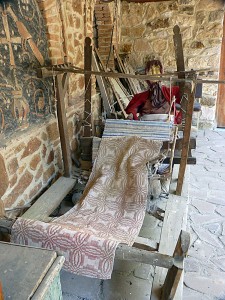 As we chatted Mama Maria ambled off and came back a few minutes later and presented me with a small sprig of herbs from her garden. It appeared this was the family taverna, but unfortunately they had no food to offer today and there was no bakery in the village. Maria said we might get food at the taverna up on the main road which passes by the top of the village so we headed up there. Yes – we could get a beer, but no, there was no food here either. So we settled for a Mythos apiece and took a seat under the trees at the side of the road, above the village rooftops and neat terraced gardens. We shall definitely go back – it is a well-situated village, perched on a hillside with great views and have no doubt that exploration will prove rewarding. We ambled back down though the narrow streets, again passing the museum. If we manage to find it open in 2013 I will update this report. If someone else gets there before me please feel free to add your own piece.
As we chatted Mama Maria ambled off and came back a few minutes later and presented me with a small sprig of herbs from her garden. It appeared this was the family taverna, but unfortunately they had no food to offer today and there was no bakery in the village. Maria said we might get food at the taverna up on the main road which passes by the top of the village so we headed up there. Yes – we could get a beer, but no, there was no food here either. So we settled for a Mythos apiece and took a seat under the trees at the side of the road, above the village rooftops and neat terraced gardens. We shall definitely go back – it is a well-situated village, perched on a hillside with great views and have no doubt that exploration will prove rewarding. We ambled back down though the narrow streets, again passing the museum. If we manage to find it open in 2013 I will update this report. If someone else gets there before me please feel free to add your own piece.